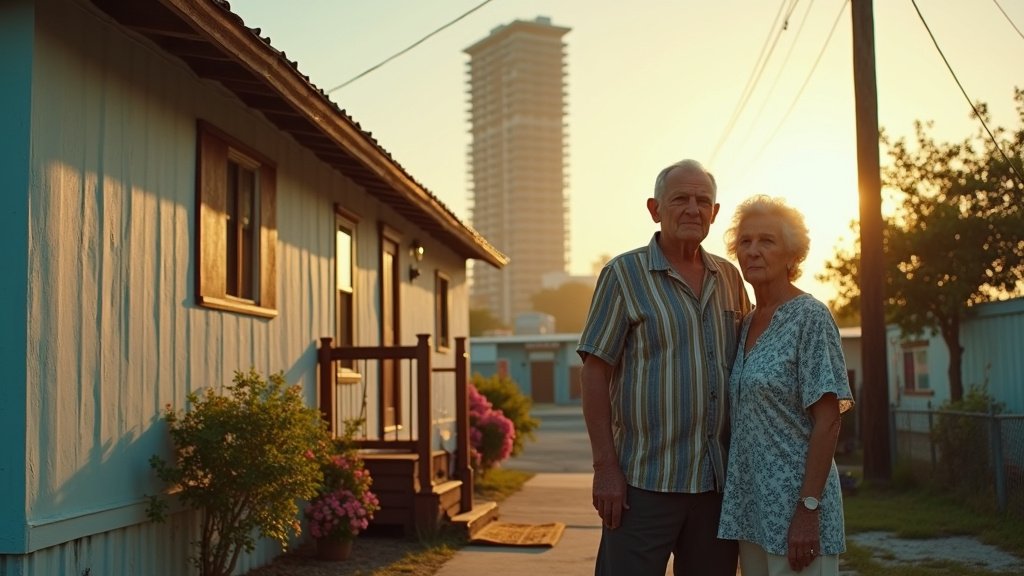MIAMI, FL – A wave of sharp criticism has swept through Miami’s prominent news media landscape, targeting a controversial rezoning application that could pave the way for a significant new waterfront development. Leading editorial boards across the city published strong condemnations on Monday, June 10, 2025, just days before the proposal is set to go before the Miami City Commission for a final decision.
The application, submitted by developer Atlantic Realty Group, seeks substantial changes to existing height and density regulations for a key parcel of land situated along the waterfront, adjacent to the beloved Maurice A. Ferré Park. The proposed project, dubbed “Marina Bay Towers,” envisions a large-scale development that, according to critics, deviates dramatically from the zoning parameters currently in place for the area.
Editorials appearing in several of Miami’s most influential publications voiced unified concern that approving such significant deviations would establish a “dangerous precedent” for future development along the city’s sensitive bayfront. The core argument centers on the potential erosion of established zoning controls designed to manage growth, preserve public spaces, and ensure development aligns with community character and infrastructure capacity.
Deep Dive into Editorial Concerns
The barrage of editorial commentary on June 10, 2025, did not mince words, highlighting specific deficiencies and potential negative impacts of the “Marina Bay Towers” proposal as presented by Atlantic Realty Group. Beyond the overarching concern about setting a “dangerous precedent” for zoning deviations, two other critical issues featured prominently across the various opinion pieces:
The Affordable Housing Component
A significant point of contention raised by the editorials was the perceived inadequacy of the affordable housing provisions within the “Marina Bay Towers” plan. As Miami continues to grapple with an escalating housing crisis, driven by rapid population growth and rising costs, local leaders and community advocates have increasingly emphasized the need for new developments, particularly large-scale projects benefiting from public land or significant zoning concessions, to contribute meaningfully to the city’s affordable housing stock.
The editorials argued that the Atlantic Realty Group’s proposal fell short of this expectation, failing to include a sufficient number of units priced within reach of average Miamians or offering alternative contributions commensurate with the scale and potential profitability of the development facilitated by the requested zoning changes. This lack of robust affordable housing was seen as a failure to address one of the city’s most pressing social and economic challenges.
Vulnerability to Sea-Level Rise
Given Miami’s precarious position as one of the most vulnerable major coastal cities globally to the impacts of climate change, specifically sea-level rise and increased storm intensity, the location and design of new waterfront developments are under intense scrutiny. The editorials expressed serious reservations about the long-term resilience and potential environmental risks associated with the “Marina Bay Towers” proposal on its key waterfront parcel near Maurice A. Ferré Park.
Critics pointed to the need for stringent building standards, elevation requirements, and infrastructure considerations that account for projected sea-level rise over the lifespan of a major structure. The editorials implied that the current plan did not sufficiently demonstrate these safeguards or that the requested density and height deviations might exacerbate risks in an area already susceptible to flooding and coastal erosion. Approving development that could be significantly impacted by future environmental conditions was deemed irresponsible by the editorial boards.
The Stakes for Maurice A. Ferré Park and the Waterfront
The parcel’s proximity to Maurice A. Ferré Park adds another layer of complexity and public interest to the rezoning debate. The park is a vital piece of downtown Miami’s public waterfront access, offering green space, cultural institutions, and recreational opportunities. Major private development immediately adjacent to such a significant public amenity raises questions about potential impacts on public viewsheds, park access, and the overall character of the waterfront area.
While the editorials primarily focused on zoning precedent, affordable housing, and sea-level rise, the context of the development’s location underscored the broader public interest at stake. The rezoning application is not just about a single building; it is about how Miami envisions the future of its precious bayfront.
The Road to the Commission Vote
The critical editorials published on June 10, 2025, are seen as a final, forceful plea to the Miami City Commission before its scheduled vote. The timing is deliberate, aiming to influence commissioners and inform the public discourse in the crucial days leading up to the decision. The city commission’s consideration of such significant rezoning requests involves weighing the developer’s property rights and economic interests against the broader public good, future planning goals, and potential community impacts.
The editorials collectively urged the Miami City Commission to reject the Atlantic Realty Group’s application for the “Marina Bay Towers” development as it currently stands. They argued that the proposed deviations are too significant, the community benefits too limited (particularly regarding affordable housing), and the potential risks (zoning precedent, environmental vulnerability) too great to warrant approval.
The final vote is slated for Tuesday, June 18th. The decision will be closely watched by developers, community groups, and residents alike, as it is expected to signal the commission’s stance on managing intensive waterfront development and upholding or altering existing zoning regulations in the face of significant market pressure.
Regardless of the outcome, the strong, unified opposition from Miami’s leading editorial voices on June 10, 2025, has ensured that the concerns surrounding the “Marina Bay Towers” rezoning application and its potential implications for the city’s future development patterns, affordability, and environmental resilience are front and center in the public consciousness as the crucial vote approaches.





